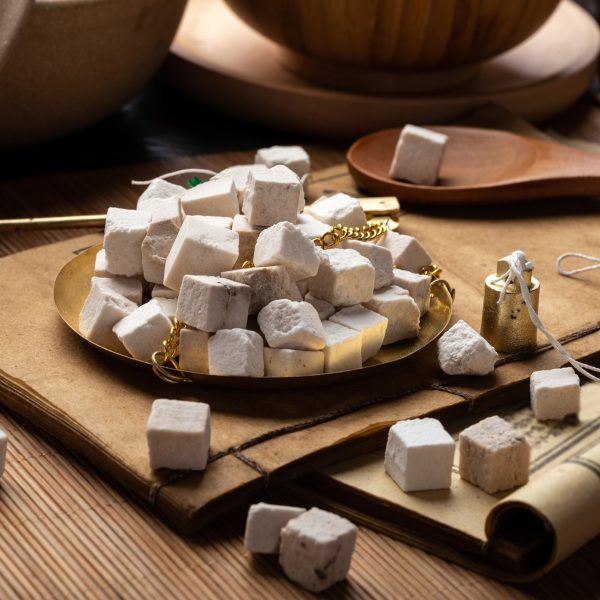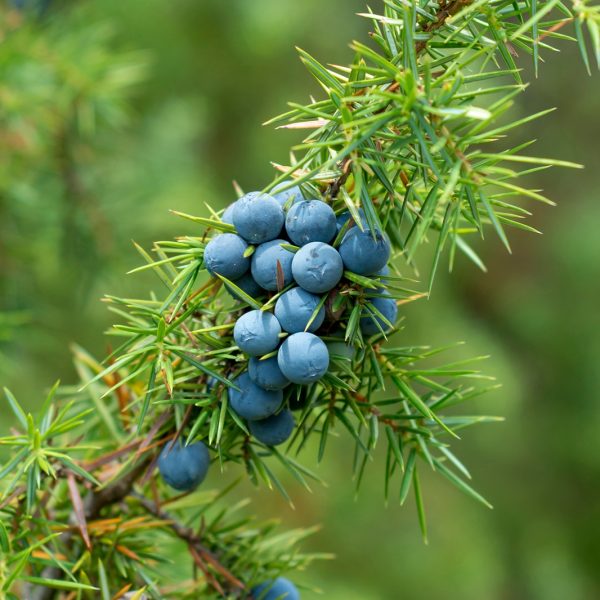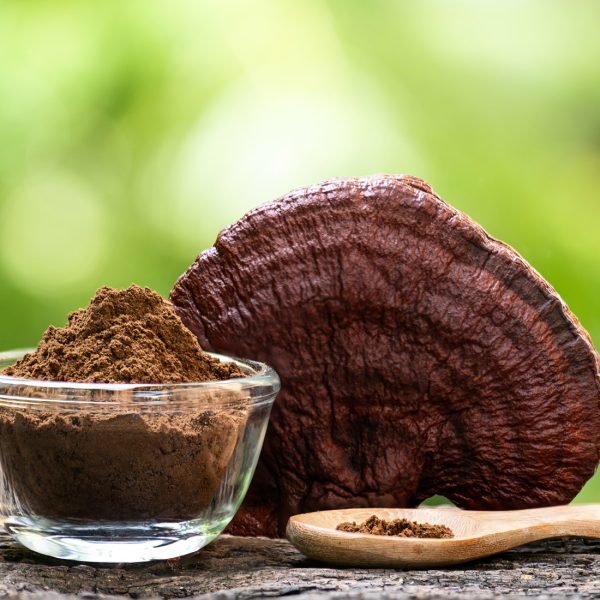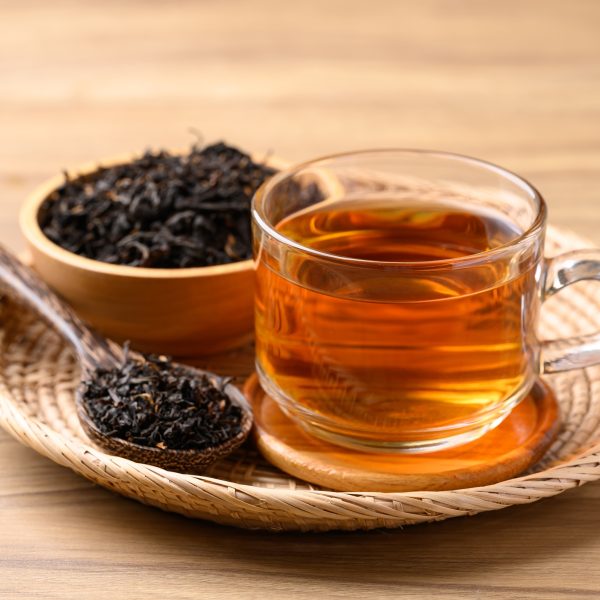-
How does it feel?
The initial feeling of prickly ash on the tongue is often a tingling, numbing sensation synonymous with that of echinacea or the after effects of a local anaesthetic, becoming bitter and pungent and causing increased salivation (1,2).
It has been more poetically described as: “set(ting) my youthful mouth and stomach on fire… You wanted to open the mouth to let the cool air get in. This warmth is felt as a warm glow through the entire system, with a sensation in the nerves as if gentle shocks of electricity were passing through the body” (3).
-
What can I use it for?

Prickly ash (Zanthoxylum americanum) Any sign of poor circulation, such as cold or discoloured hands or feet, may indicate that the warming and circulatory stimulating actions of prickly ash are called for. It can be used for conditions associated with insufficiency of peripheral circulation such as Reynaud’s syndrome, cramps of the legs or feet, intermittent claudication, restless leg syndrome, varicose veins and haemorrhoids. (1,4,5,6).
It is also considered by many to be useful in the treatment of neuropathic pain including sciatica, trigeminal neuralgia, carpal tunnel and other syndromes featuring compression of a nerve. In these circumstances, it may also be used topically on the affected area as a liniment, salve, poultice or plaster (1,4,7,8).
The antimicrobial actions of prickly ash make it a useful herb for a range of both acute and chronic infections, especially of the skin, gut and respiratory tracts (5). It is particularly indicated in respiratory conditions that feature a tendency towards dryness of the airways and old secretions of the lungs or nasal passages, loosening thick phlegm and relieving congestion (5,9). For colds or flu, it may be taken hot to further promote its diaphoretic action and subsequent healthy immune system response (5,8).
-
Into the heart of prickly ash
In traditional Chinese medicine (TCM), prickly ash has long been included in the class of herbs considered to tonify yang, dispel cold and generate warmth, so is often indicated in conditions that are associated with deficient circulation, lack of innate warmth and slow metabolic processes (10).
Prickly ash is said to be connected to the solar plexus and is associated with vigour, inspiration and motivation. In some traditions, it is connected to heightened awareness and deep intuitive qualities (11).
Prickly ash is reported to have been included in the first Chinese dictionary, the erya. During this era, it was prized not purely for its medicinal benefits but was seen to symbolise beauty, holiness and purity, consequently being used as an incense to bestow blessings, and affection and to show reverence to the gods (12).
-
Traditional uses

Prickly ash (Zanthoxylum americanum) Many of the traditional uses of prickly ash are still to be reflected in its use by modern medical herbalists. It is evidenced to have had widespread medicinal use by the indigenous peoples of North America for a range of conditions, including toothache, rheumatism and gastric issues, all of which the bark or berries were often chewed (10,13,14).
Its introduction into the materia medica of Western herbalism has been attributed to the Eclectic medical movement, founded in the early 1900s. This was considered revolutionary at that time for their ethos of using plant-based medicines as an alternative to some of the more extreme medical practices of the day, such as the prescribing of toxic chemicals and extensive bloodletting. The study of plants native to the Americas compiled by these practitioners validated and recognised the knowledge and experience of traditional herbalists. In the late 19th century, prickly ash was first seen to be included as a medicinal plant for the treatment of cholera and typhus during the epidemics that occurred during these years (10,15,16).
Although Z. clava-herculis and Z. americanum are the two species of prickly ash often used interchangeably in the United States, other species have been recognised for their medicinal properties within traditional medicine practices around the world. In West Africa, Z. zanthoxyloides is a traditional remedy for rheumatism, whilst in South Africa, Z. capense is considered to relieve colic. In traditional Chinese medicine, Z. burgeanum (chuan jiao) is used for abdominal pains caused by a cold pattern of illness (2,14).
-
Traditional actions
Herbal actions describe therapeutic changes that occur in the body in response to taking a herb. These actions are used to express how a herb physiologically influences cells, tissues, organs or systems. Clinical observations are traditionally what have defined these actions: an increase in urine output, diuretic; improved wound healing, vulnerary; or a reduction in fever, antipyretic. These descriptors too have become a means to group herbs by their effects on the body — herbs with a nervine action have become the nervines, herbs with a bitter action are the bitters. Recognising herbs as members of these groups provides a preliminary familiarity with their mechanisms from which to then develop an understanding of their affinities and nuance and discern their clinical significance.
-
Traditional energetic actions
Herbal energetics are the descriptions Herbalists have given to plants, mushrooms, lichens, foods, and some minerals based on the direct experience of how they taste, feel, and work in the body. All traditional health systems use these principles to explain how the environment we live in and absorb, impacts our health. Find out more about traditional energetic actions in our article “An introduction to herbal energetics“.
-
What practitioners say

Prickly ash berries (Zanthoxylum americanum) Cardiovascular
Many practitioners consider prickly ash to be specific in cases where there are any signs of poor circulation, particularly when this is apparent in the peripheries, with patients often reporting cold, discoloured or mottled hands or feet. Its warming circulatory stimulant effects make it a valuable addition to any herbal formulation intended to treat conditions involving muscular tension or spasm, cramps, Reynaud’s syndrome, chilblains, varicose veins and ulcers or conditions involving narrowing of the arteries supplying blood flow to the limbs such as intermittent claudication (4,6 14,17).
Its stimulatory action on the microcirculation also makes it an ideal herb to deliver other constituents included in a herbal formula to the targeted body system or tissues in a similar, albeit slower, way to which herbs such as chilli (Capsicum minimum), ginger (Zingiber officinale) or rosemary (Salvia rosmarinus) may be included in a prescription (4,8,9).
Prickly ash combines well alongside other herbs with an affinity for the cardiovascular system such as hawthorn (Crataegus spp.), yarrow (Achillea millefolium) and horsechestnut (Aesculus hippocastanum) for varicose conditions or crampbark (Viburnum opulus) as both an internal and external remedy for the relief of muscle tension or cramps (18).
Priest and Priest describe prickly ash as being “…a positive diffusive stimulant – induces free arterial/capillary circulation, restores vascular tone” (19).
Immune
The antimicrobial, alterative and diaphoretic properties of prickly ash combine to make it a prime ally in the treatment of a range of acute and chronic infections. It is an ideal herb to include in formulas intended to be used at the onset of colds or flu-like symptoms and is particularly effective in the treatment of upper respiratory tract infections. It has been demonstrated to have antifungal properties against a wide range of commonly found fungal infections and may also be used in the treatment of bacterial or parasitic helminth alimentary tract infections (5,8).
Neurological
Prickly ash has been seen to be of benefit in cold, chronic conditions involving the nerves such as neuralgia and nerve damage as well as the pain caused by carpal tunnel syndrome and sciatica. In both internal and external preparations, prickly ash may be used similarly to St John’s wort. However, whereas St John’s wort is considered specific for a person whose pain is worse for movement, prickly ash would be indicated for the person who cannot remain still due to their pain. It is considered a strengthening stimulant, and by enhancing cerebral blood flow it enhances concentration, memory and may help relieve cognitive fatigue, especially when stress or anxiety are contributory factors (5,7,20,21).
Respiratory
The warming and stimulating actions of prickly ash contribute to its ability to move thick catarrh or phlegm and relieve congestion in the sinuses or lungs, particularly in cases where there is scanty or no expectoration. The enhanced blood flow to the throat area is beneficial in sore throats or infections such as tonsillitis or pharyngitis. It acts on localised infection whilst promoting optimal immune response to the affected areas as well as systemically (5,8,9).
Musculoskeletal
Prickly ash has a long history of use for conditions of the musculoskeletal system such as rheumatism, arthritis and gout. More recently, it has been evidenced to have a place in the treatment of some autoimmune diseases that present with a diversity of complex symptoms. This particularly includes those affecting the musculoskeletal system, causing joint and muscle pain, weakness and fatigue, including fibromyalgia and chronic fatigue syndrome (CFS), among others, that are seen to be increasingly on the rise over the last few decades (5,20, 22,23).
-
Research

Prickly ash (Zanthoxylum americanum) Zanthoxylum species: A Comprehensive review of traditional uses, phytochemistry, pharmacological and nutraceutical applications
This comprehensive review looks at the biological activity of the constituents found in a number of prickly ash species from around the world in the context of its traditional medicinal uses including cardiovascular, neurological and metabolic health conditions. Results of these investigations indicate lipid-lowering, cardioprotective, anti-inflammatory, analgesic, antithrombotic, osteoprotective, neuroprotective actions and Alzheimer’s disease modulatory effects, which support many of the traditional and modern uses of prickly ash (24).
Activity of Zanthoxylum clava‐herculis extracts against multi‐drug resistant methicillin‐resistant Staphylococcus aureus (mdr‐MRSA)
In response to the current reality of increasing antibiotic resistance, there is ongoing research into compounds displaying antibiotic activity against resistant bacteria, including methicillin-resistant Staphylococcus aureus (MRSA). This study showed that an isolate of the alkaloid chelerythrine from Southern prickly ash (Z. clava-herculis) demonstrated potent activity against highly resistant strains of MRSA that were unresponsive to treatment by other frequently prescribed antibiotics (25).
Cannabimimetic plants: Are they new cannabinoidergic modulators?
The role of the human endocannabinoid system in many aspects of human health and well-being is seen to be increasingly explored with the cannabinoid receptors CB1 and CB2 becoming a therapeutic target for the treatment of conditions ranging from anxiety to obesity. This review examining potentially cannabimimetic plants not included in the cannabis genus suggests that there is evidence that the alkaloids chelerythrine and γ-sanshool, both found in Southern prickly ash (Z. clava-herculis) demonstrate cannamimetic properties with γ-sanshool specifically displaying activity against CB1 and CB2 receptors (26).
Cytotoxic coumarins and lignans from extracts of the northern prickly ash (Zanthoxylum americanum)
This paper from 2001 explicitly focused on extracts obtained from the berry of Northern prickly ash (Z. americanum) and their cytotoxicity to human tumour cells. This was further explored in more recent work, which suggests constituents found in the stem and root bark of the plant inhibit the synthesis of DNA in human leukaemia cells (27)
Antifungal constituents of Northern prickly ash, Zanthoxylum americanum Mill
This study aimed to investigate the likely phytochemical basis for the traditional use of Northern prickly ash in the treatment of fungal infections and examines its potential ability to inhibit a range of pathogenic fungi including Candida albicans and Aspergillus fumigatus. All extracts were shown to possess broad spectrum anti-fungal activity supporting its traditional use for conditions related to fungal infections (28).
-
Did you know?
The botanical name for this genus of plants, Zanthoxylum, originates from the combination of the Latin word for yellow (zantho) and the Greek word for wood (xylem) directly translating as ‘yellow wood’ (29). Xylem is also the scientific term for the vascular system of the plant which transports water and nutrients upwards from the roots to the stems and leaves.
The Rutaceae plant family to which prickly ash belongs also includes citrus fruit-bearing trees such as lemon, lime, orange, grapefruit and tangerine, along with common rue, a plant with both culinary and medicinal purposes (30).
Szechuan peppercorns, widely used as a condiment and food ingredient in some parts of the world for their unique flavour, are the berries of various species of Zanthoxylum of which Z. bungeanum and Z. armatum are most widely recognised and acknowledged for their contrasting tastes (31,32,33).
Additional information
-
Botanical description
Prickly ash (Z. clava-herculis) is a deciduous, dioecious plant most frequently found ranging in size from shrub-like to a small tree, yet it may occasionally be seen to have reached heights of up to 14 metres. The bark is greyish in colour with stout, sharp prickles which become larger on the branches and small stalks that join the leaves to the stems. The pointed oval leaves are arranged in pairs down a central stalk with only the terminal leaflet being unpaired and having a shiny, smooth green appearance with very subtle serrulate margins.
The greenish flowers are small but generally plentiful and appear in spring before the leaves. The small aromatic fleshy fruits, which have a smell reminiscent of lemon and contain a shiny black seed, cluster at the end of the branches of female trees and ripen from green to red-brown from August onwards (29,41).
-
Common names
- Toothache tree
- Hercules club
- Tickle tongue
- Yellow tree
-
Safety
According to the British Herbal Compendium, prickly ash should not be used during pregnancy due to the presence of alkaloids. However, the literature of the Eclectic physician movement that introduced prickly ash into Western herbal medicine based on their observations of the herb’s use within traditional Indigenous American medicine makes no mention of this caution (6,34).
Brinker also advises it is best avoided during pregnancy due to its potential emmenagogue action and speculatively also whilst breastfeeding (35). Other modern sources state that it is safe during both pregnancy and lactation (1,34). It is strongly recommended that anyone who is pregnant or breastfeeding consults a qualified medical herbalist before considering taking prickly ash. See our where to find a herbalist page for further details.
-
Interactions
It is reported that prickly ash may decrease the clinical effects of over-the-counter and prescribed medicines used for the treatment of indigestion and acid reflux disorders such as antacids, proton pump inhibitors (PPIs) and H2 blocker drugs (34,35,36).
-
Contraindications
Anyone with inflammation or ulceration of the gastrointestinal tract is advised to see a qualified medical herbalist before considering taking prickly ash (35). Theoretically, prickly ash is contraindicated in conjunction with anticoagulant medications (4). No other contraindications or adverse effects are reported if taken within the recommended dosage (6,34). However, it is cautioned that should signs of excessive heat become apparent, such as thirst, dry mucous membranes or flushing of the skin, the dose should be reduced or ceased (8).
-
Preparations
- Unprocessed bark or berry may be chewed (6,8,13,37)
- Decoction (6,8,13,37)
- Tincture (6,8,13,37)
- Powder (6,8,13,37)
- Liniment or salve (6,8,13,37)
-
Dosage
- Tincture (ratio 1:5 | 45%): 6–15 ml/day (4,6,23,34)
- Fluid extract (1:1 | 45%): 3–9 ml/day (4,6,23,34)
- Decoction: 3–9 g/day of dried stem bark by decoction (4,6,23,34)
-
Plant parts used
Bark and, in some instances, berries
-
Constituents
- Amides: α-sanshool, herclavin, herculin, neoherculin
- Alkaloids: Candicine, chelerythrine, laurifoline, magnoflorine, nitidine, and tembetarine
- Lignans: Asarinin and sesamin
- Volatile oils: α-myrcene, α-ocimene, linalyl acetate, geranyl acetate, D-limonene, gamma-terpinene, terpinolene, terpinen-4-ol, terpineol, α-terpinyl acetate, and α-pinene
Although the two species of southern and northern prickly ash (Z. clava-herculis and Z. americanum) are considered to be medicinally interchangeable and share many constituents in common, there are some significant differences in constituent presence and content between the two species. The amides, α-sanshool, herclavin, herculin, and neoherculin, considered to be responsible for many of the primary actions of prickly ash, are only reported to be present in Z. clava-herculis. Whilst, in contrast, coumarins have been identified in the bark of Z. americanum, including dipetaline, alloxanthoxyletin, xanthoxyletin, and xanthyletin, which are not found in Z. clava-herculis (2,23,24,38,39,40).

-
Habitat
Northern prickly ash (Z. americanum) is native to the southernmost parts of Canada and northwest and central areas of the US, although they are now found growing in other regions. Despite their tolerance to temperatures as low as –40°C, their preferred habitat is shaded, damp places such as woodland (13,14,42).
The native range of Southern prickly ash (Z. clava-herculis) extends throughout central and southeast USA down to Eastern Mexico. It grows primarily in the subtropical biome and isoften found in light sandy soils near coastline, island bluffs, or on the banks of rivers or dunes, preferring fertile but well-drained soil (2,41, 43).
-
Sustainability
 The sustainability of prickly ash was assessed in 2018 and was considered to be of Least Concern according to the IUCN (International union for the conservation of Nature) Red List of Threatened species due to it having a widely distributed large population with no significant future threats having been identified (43,44,45,46).
The sustainability of prickly ash was assessed in 2018 and was considered to be of Least Concern according to the IUCN (International union for the conservation of Nature) Red List of Threatened species due to it having a widely distributed large population with no significant future threats having been identified (43,44,45,46).Habitat loss and over-harvesting from the wild are two of the biggest threats faced by medicinal plant species. There are an increasing number of well-known herbal medicines at risk of extinction. We must, therefore, ensure that we source our medicines with sustainability in mind.
The herb supplement industry is growing at a rapid rate and until recent years a vast majority of medicinal plant produce in global trade was of unknown origin. There are some very real and urgent issues surrounding sustainability in the herb industry. These include environmental factors that affect the medicinal viability of herbs, the safety of the habitats that they are taken from, as well as the welfare of workers in the trade.
The botanical supply chain efforts for improved visibility (transparency and traceability) into verifiably sustainable production sites around the world is now certificated through the emergence of credible international voluntary sustainability standards (VSS).
Read our article on Herbal quality and safety: What to know before you buy and Sustainable sourcing of herbs to learn more about what to look for and questions to ask suppliers about sustainability.
-
Quality control
Herbal medicines are often very safe to take; however, their safety and efficacy can be jeopardised by quality issues. So, it is important to buy herbal medicines from a reputable supplier, from sources known to test their herbs to ensure there is no contamination, adulteration or substitution with incorrect plant matter, as well as ensuring that recognised marker compounds are at appropriate levels in the herbs.
Some important quality assurances to look for are certified organic labelling, the correct scientific/botanical name, and the availability of information from the supplier about ingredient origins. A supplier should be able to tell you where the herbs have come from, what contaminants are not in the herb, and what the primary compounds are.
-
How to grow
Although not native to Britain and Europe, prickly ash grows well in both the range of climate and soil types available in most of this region. It prefers moist but well drained soil and will tolerate sand, clay, neutral or alkaline soil types in a location that receives between full sun to partial shade. It may be propagated from either seed or root cuttings.
The leaves of the prickly ash tree will often remain on the tree over winter, only falling once they are replaced by new leaves in the spring. Due to the dioecious (having staminate and pistillate reproductive organs on separate plants) nature of prickly ash it is necessary to ensure that both male and female trees are grown for seed to be produced. Flowers are formed on the previous year’s growth of wood and although these are not conspicuous, they are seen to attract butterflies, increasing the biodiversity of a garden (41,42,47).
-
Recipe
Back pain relief (14)
In addition to its benefits as an internal medicine, prickly ash is a safe and effective remedy to use as an external preparation for the relief of musculoskeletal issues such as back ache, particularly a tight neck and lumbar regions, and rheumatism or arthritic pain, or to provide relief for conditions involving the nerves such carpal tunnel syndrome (14,7).
Ingredients
- 5 g prickly ash bark
- 15 g cramp bark (Viburnum opulus) bark
- 750 ml water
Method
-
References
- Bone K. A clinical guide to blending liquid herbs: Herbal Formulations for the Individual Patient. Elsevier Health Sciences; 2003.
- Wren RC, Williamson EM, Evans FJ. Potter’s new Cyclopaedia of Botanical Drugs and Preparations. C.W. Daniel Company, Limited; 1988.
- Clarke JH. Xanthoxylum – Dictionary of Practical Materia Medica by J.H. Clarke. HomeopathyBooks.in. Published January 19, 2019. https://homeopathybooks.in/dictionary-of-practical-materia-medica-by-j-h-clarke/xanthoxylum-2/
- Hoffmann D. Medical Herbalism: The Science and Practice of Herbal Medicine. Simon and Schuster; 2003.
- McIntyre A. The complete herbal tutor: The Definitive Guide to the Principles and Practices of Herbal Medicine – Second Edition. Aeon Books; 2019.
- Thomsen M. The Phytotherapy Desk reference: 6th Edition. Aeon Books; 2022.
- Song, Song. Peripheral Neuropathy and Herbal Medicine – Northeast School of Botanical Medicine. Northeast School of Botanical Medicine – Fostering and expanding knowledge of botanical medicine. Published November 30, 2024. https://7song.com/peripheral-neuropathy-and-herbal-medicine/
- Coffman S. Herbal medic: A Green Beret’s Guide to Emergency Medical Preparedness and Natural First Aid. Hachette UK; 2021.
- Stansbury J. Herbal Formularies for Health Professionals, Volume 2: Circulation and Respiration, including the Cardiovascular, Peripheral Vascular, Pulmonary, and Respiratory Systems. Chelsea Green Publishing; 2018.
- Holmes P. The Energetics of Western herbs, Volumne 1: A herbal reference integrating Western and oriental medicine traditions. NatTrop publishing; 1993
- Prickly ash bark- wildcrafted. TheMagickalEarth. https://themagickalearth.com/products/prickly-ash-bark
- Bao Y, Yang L, Fu Q, et al. The current situation of Zanthoxylum bungeanum industry and the research and application prospect. A review. Fitoterapia. 2022;164:105380. doi:10.1016/j.fitote.2022.105380
- Phillips R., Foy N. Herbs. Pan books Ltd; 1990
- Chevallier A. Encyclopedia of Medicinal Plants.; 2001.
- Exploring the Eclectics and the Eclectic medical Movement. Eclecticherb. Published September 9, 2024. https://eclecticherb.com/blogs/news/exploring-the-eclectics-and-the-eclectic-medical-movement?srsltid=AfmBOop-OpFfGSGZphYrhKaNDVyXTUSvOfcnoebaNU_qm3qU-DJTXuvY
- Bone K. Functional Herbal Therapy: A Modern Paradigm for Western Herbal Clinicians. Aeon Books; 2021.
- O’Hare L. Relief for Raynaud’s disease. Herbal Clinic – Swansea. Published October 29, 2021. https://www.herbalclinic-swansea.co.uk/articles/relief-for-raynauds-disease/
- Green J. The Male herbal: The Definitive Health Care Book for Men and Boys. Crossing Press; 2011.
- Priest AW, Priest LR. Herbal medication: A Clinical and Dispensary Handbook.; 1983.
- Herbert C. Inflammation, the source of chronic disease: How to Treat It with Herbs and Natural Healing. Aeon books.; 2022.
- Wood M. The Book of Herbal Wisdom: Using Plants as Medicines. North Atlantic Books; 2017.
- Bone K, Mills S. Principles and practice of phytotherapy: Modern Herbal Medicine. Elsevier Health Sciences; 2013.
- Bartram T. Encyclopedia of Herbal Medicine. Grace publishers; 1995.
- Okagu IU, Ndefo JC, Aham EC, Udenigwe CC. Zanthoxylum Species: A Comprehensive review of traditional uses, phytochemistry, pharmacological and nutraceutical applications. Molecules. 2021;26(13):4023. doi:10.3390/molecules26134023
- Gibbons S, Leimkugel J, Oluwatuyi M, Heinrich M. Activity of Zanthoxylum clava‐herculis extracts against multi‐drug resistant methicillin‐resistant Staphylococcus aureus (mdr‐MRSA). Phytotherapy Research. 2003;17(3):274-275. doi:10.1002/ptr.1112
- Kumar A, Premoli M, Aria F, et al. Cannabimimetic plants: are they new cannabinoidergic modulators? Planta. 2019;249(6):1681-1694. doi:10.1007/s00425-019-03138-x
- Ju Y, Still CC, Sacalis JN, Li J, Ho C. Cytotoxic coumarins and lignans from extracts of the northern prickly ash (Zanthoxylum americanum). Phytotherapy Research. 2001;15(5):441-443. doi:10.1002/ptr.686
- Bafi-Yeboa NFA. Phytochemical and pharmacological properties of northern prickly ash, Zanthoxylum americanum Mill (Rutaceae). 2003. doi:10.20381/ruor-9578
- Xanthoxylum (U. S. P.)—Xanthoxylum. | Henriette’s herbal homepage. https://www.henriettes-herb.com/eclectic/kings/xanthoxylum.html
- Rutaceae juss. | Plants of the World Online | Kew Science. Plants of the World Online. https://powo.science.kew.org/taxon/urn:lsid:ipni.org:names:30001492-2
- Xiang L, Liu Y, Xie C, et al. The Chemical and Genetic Characteristics of Szechuan Pepper (Zanthoxylum bungeanum and Z. armatum) Cultivars and Their Suitable Habitat. Frontiers in Plant Science. 2016;7. doi:10.3389/fpls.2016.00467
- Bergo A. Wild szechuan peppercorns (Prickly ash). Forager | Chef. Published January 27, 2023. https://foragerchef.com/wild-szechuan-peppercorns/
- Forager Chef. Prickly Ash Archives. https://foragerchef.com/category/wild-herbs-spices/prickly-ash/
- Mills SY, Bone K. The essential guide to herbal safety. Elsevier Health Sciences; 2004.
- Brinker F. Herb contraindications & drug interactions. Eclectic medical press; 1998.
- NatMed Pro. https://naturalmedicines.therapeuticresearch.com/
- Hedley C. A herbal book of making and taking. Aeon Books; 2019.
- Pengelly A. The constituents of medicinal plants: An introduction to the chemistry and therapeutics of herbal medicine. Routledge; 2020.
- Ganora L. Herbal Constituents, 2nd Edition: Foundations of Phytochemistry. Herbalchem press; 2021.
- Lu IC, Hu PY, Lin CH, et al. Alkamides in zanthoxylum species: phytochemical profiles and local anesthetic activities. International Journal of Molecular Sciences. 2024;25(22):12228. doi:10.3390/ijms252212228
- Zanthoxylum clava-herculis Hercules Club. Prickly Ash – Southern, Hercules’ club, Southern Prickly Ash PFAF Plant Database. https://pfaf.org/user/Plant.aspx?LatinName=Zanthoxylum+clava-herculis#:~:text=Zanthoxylum%20clava%2Dherculis%20is%20a,ripen%20from%20September%20to%20October.
- D C. Prickly ash care: The Toothache tree. Plantly. Published May 30, 2024. https://plantly.io/plant-care/prickly-ash/?srsltid=AfmBOoqkbYtvuMqPMdENWQde77vXfMPlGEcrqE_55pcHWY17lAyUPbs_
- Zanthoxylum clava-herculis L. | Plants of the World Online | Kew Science. Plants of the World Online. https://powo.science.kew.org/taxon/urn:lsid:ipni.org:names:775655-1
- IUCN Red List of Threatened Species: Zanthoxylum clava-herculis. IUCN Red List of Threatened Species. Published June 12, 2018. https://www.iucnredlist.org/species/152906282/152906284#assessment-information
- Strategic Priorities – TRAFFIC – The Wildlife Trade monitoring network. https://www.traffic.org/what-we-do/strategic-priorities/#
- Assessing biodiversity status and Threats | NatureServe. https://www.natureserve.org/assessing-biodiversity-status-threats
- Zanthoxylum clava-herculis | southern prickly ash /RHS. Royal Horticultural Society. https://www.rhs.org.uk/plants/162061/zanthoxylum-clava-herculis/details






































